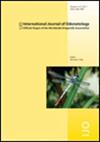Development and validation of microsatellite markers for an endangered dragonfly, Libellula angelina (Odonata: Libellulidae), with notes on population structures and genetic diversity
IF 1
4区 农林科学
Q3 ENTOMOLOGY
引用次数: 3
Abstract
The Bekko Tombo, Libellula angelina Selys, 1883 (Odonata: Libellulidae), is listed as an endangered species in South Korea, and is classified as a critically endangered species by the International Union for Conservation of Nature (IUCN). An assessment of the genetic diversity and population relationships of the species by molecular markers can provide the information necessary to establish effective conservation strategies. In this study, we developed 10 microsatellite markers specific to L. angelina using the Illumina NextSeq 500 platform. Forty-three samples of L. angelina collected from three localities in South Korea were genotyped to validate these markers and to preliminarily assess the population genetic characteristics. The 10 markers revealed 4–11 alleles, 0.211–0.950 observed heterozygosity (H O), and 0.659–0.871 expected heterozygosity (H E) in the population with the largest sample size (n = 20), thereby validating the suitability of these markers for population analyses. Our preliminary assessment of the population genetic characteristics appears to indicate the following: presence of inbreeding in all populations, an isolation of the most geographically distant population (Seocheon), and a lower H O than H E. The microsatellite markers developed in this study will be useful for studying the population genetics of L. angelina collected from additional sites in South Korea and from other regions.濒危蜻蜓Libellula angelina(蜻蜓目:Libellula dae)微卫星标记的开发与验证,以及种群结构和遗传多样性的注释
Bekko Tombo,Libellula angelina Selys,1883年(蜻蜓目:Libellulidae),在韩国被列为濒危物种,并被国际自然保护联盟(IUCN)列为极度濒危物种。通过分子标记对物种的遗传多样性和种群关系进行评估,可以为制定有效的保护策略提供必要的信息。在本研究中,我们使用Illumina NextSeq 500平台开发了10个天使乳杆菌特异性微卫星标记。对从韩国三个地区采集的43份L.angelina样本进行了基因分型,以验证这些标记并初步评估种群遗传特征。在样本量最大(n = 20) 从而验证了这些标记物对群体分析的适用性。我们对种群遗传特征的初步评估似乎表明:所有种群都存在近亲繁殖,地理距离最远的种群(Seocheon)被孤立,并且H O低于H E。本研究中开发的微卫星标记将有助于研究从韩国和其他地区的其他地点采集的L.angelina的群体遗传学。
本文章由计算机程序翻译,如有差异,请以英文原文为准。
求助全文
约1分钟内获得全文
求助全文
来源期刊

International Journal of Odonatology
ENTOMOLOGY-
CiteScore
2.30
自引率
0.00%
发文量
15
审稿时长
>12 weeks
期刊介绍:
International Journal of Odonatology (IJO) is aimed at providing a publication outlet for the growing number of students of Odonata. It will address subjects such as the ecology, ethology, physiology, genetics, taxonomy, phylogeny and geographic distribution of species. Reviews will be by invitation, but authors who plan to write a review on a subject of interest to the journal are encouraged to contact the editor.
 求助内容:
求助内容: 应助结果提醒方式:
应助结果提醒方式:


